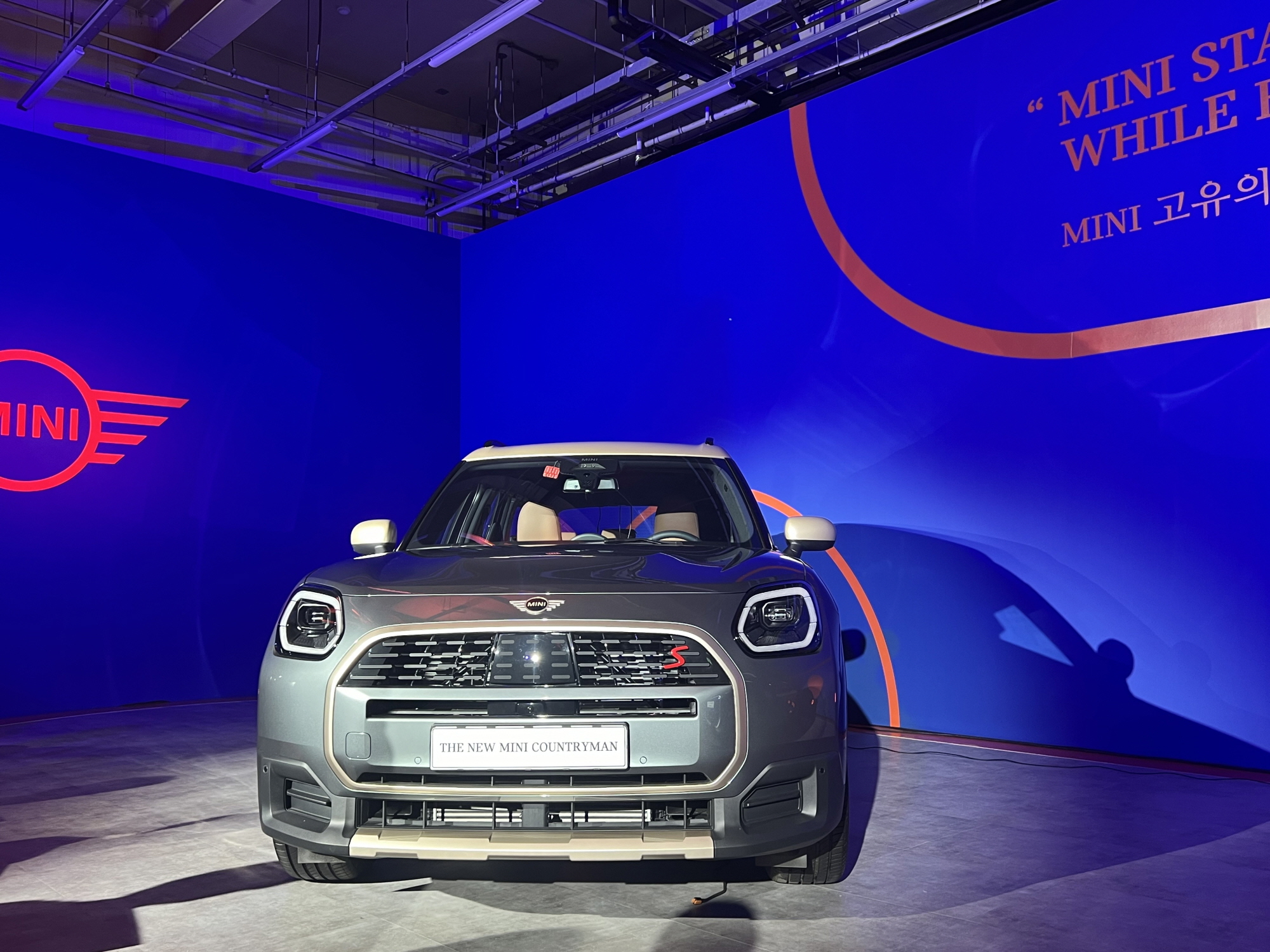
The larger body comes adorned with cutting-edge digital features, exuding the energy of a 14-year-old. It’s the third-generation ‘All-New MINI Countryman.’ I took it on an 80 km round trip from Seong-su-dong in Seoul to Namyangju in Gyeonggi Province.
The Countryman debuted in the domestic market in 2011 as MINI’s very first model over four meters long. The second-generation model hit the market in 2017, and now, after seven years, the fully revamped third-generation model has been launched this month.
Despite being a completely revamped model, the unique design genes of the MINI brand, which has a 65-year history, are still evident. The round headlights have been replaced with an even more impressive octagonal design, and the rear lights can be selected in three modes. The radiator grille and the lower air intake have been styled in a simple manner, emphasizing the ‘clean charisma’ that MINI aims to highlight in the third-generation Countryman.
Measuring at 4,445 × 1,845 × 1,660 mm, the new Countryman is larger overall compared to the previous model (4,295 × 1,820 × 1,555 mm). It can no longer be classified as a MINI in terms of size. The vehicle, now in the compact SUV segment, can even be called large. The wheelbase has also increased by 20 mm to 2,690 mm.
In the rear seat, there’s enough space for a fist in front of the knees and two fists overhead. The center tunnel rises to palm height. Even when seated in the middle of the second row, there’s a fist of space above the head, ensuring comfort. Additionally, the second-row seats are adjustable, which allows passengers more comfort during long journeys.
The interior pays homage to the original first-generation MINI design by boldly omitting the driver’s instrument panel. Instead, a combiner-style head-up display has been introduced. The center fascia features a round OLED display created in collaboration with Samsung Display. This OLED display, boasting 11 million pixels of clarity, provides various driving information to both the driver and passengers. Additionally, the OLED display has an ‘experience mode’ that offers different concepts for graphics, interface, ambient projection, driving, and functional sounds.
In the sweltering heat of over 30 degrees, the air conditioning buttons embedded in the OLED display can be adjusted with a drag. Even elderly passengers who are not accustomed to smart device systems can easily make adjustments. However, a drawback is the lack of a ventilated seat feature that would be beneficial considering the hot weather in South Korea.
The MINI OS 9 includes the ‘MINI Digital Key Plus,’ which allows users to use their smartphone as a car key. There’s no need to return home to fetch the car key anymore. Additionally, the round OLED personalization feature and wireless connections for CarPlay and Android Auto are supported. For the first time in the MINI brand, Tmap navigation has been integrated, which links with the head-up display to enhance focus while driving in unfamiliar areas.
With a maximum output of 204 horsepower and peak torque of 30.6 kg.m, the 2.0-liter four-cylinder gasoline engine works in harmony with a 7-speed Steptronic transmission, making 2.4 turns from lock to lock. The steering response carries on MINI’s go-kart feeling legacy, giving it a reasonably heavy yet smooth demeanor.
The Countryman traverses rural roads with ease, occasionally sounding collision warnings when passing. Furthermore, the surround view displayed on the screen checks for obstacles on narrow roads in anticipation of any potential accidents. At junctions where one needs to choose between right or left, augmented reality navigation through the front camera works alongside Tmap, providing accurate directions to avoid confusion.
At a speed of 100 km/h, only the sounds of the road and wind tickle my ears. A sense of comfort not felt before in the Countryman washes over me. Pushing it further at high speeds amplifies the wind and road noise, harmonizing in a song to celebrate this achievement like a child gleefully racing home with a perfect score.
Equipped with the permanent all-wheel drive system, ALL4 enables the Countryman to maintain stable driving sensations even at high speeds. This is a front-based all-wheel drive system.
The Countryman features active cruise control, which adjusts the speed while maintaining flow with surrounding traffic and adjusts the distance to the vehicle in front. Additionally, the lane-keeping assist system helps maintain lane position even on sharp curves, reducing driver fatigue in long-distance driving.
The Countryman is not just larger in size but also aims for mass appeal by including a variety of convenience features and ensuring passenger comfort. The enhanced product quality of the Countryman leaves us eager to see what results it will bring.
The test vehicle was the Countryman favored trim at a price of 57 million won. The New MINI Countryman S ALL4 Classic trim is priced at 49.9 million won, while the New MINI JCW Countryman ALL4 comes in at 67 million won.
Lee Sang-jin daedusj@autodiary.kr
